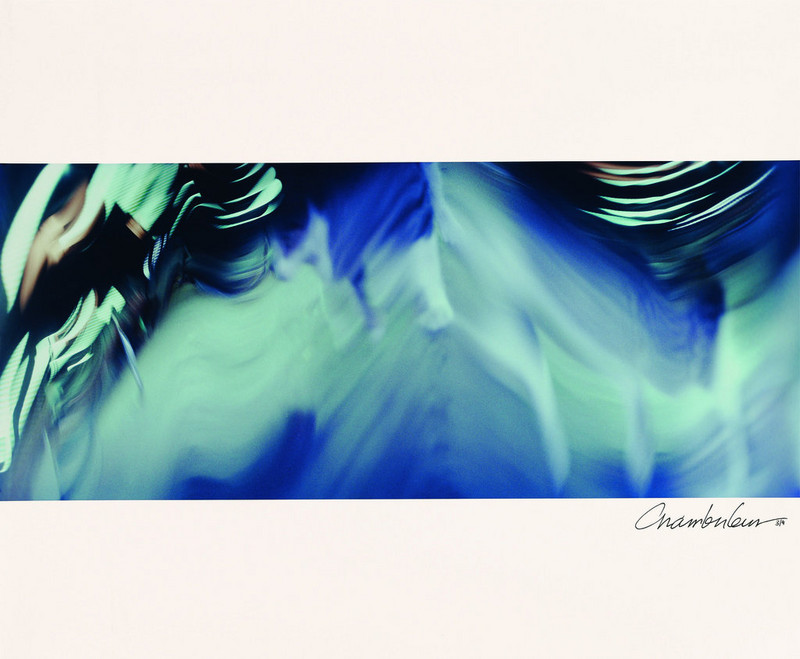 |
| John Chamberlain, Untitled, 2005 |
In another lovely exhibition, this month Karsten Greve’s
corner gallery is showing a selection of John Chamberlain’s photographs. While most people will be familiar with
Chamberlain’s steel sculptures that look like cars mutilated in accidents, these sumptuous photographs are less known. The images themselves incited
wonder and fascination in and of themselves, but I couldn't help thinking of them in
relationship to the sculptures. Indeed, there is an uncanny connection between
the two art forms as he works them.
 |
| John Chamberlain, Studio Lite IX, 1989 |
Here at Karsten Greve, the photographs taken in the studio
are aesthetically gorgeous. It’s hard to believe they are not paint, as the Widelux
panoramic camera is pivoted and swung to create objects in motion that resemble
streaks of light, or the statement of a brush on the surface of the image. And
in many of the photographs, those objects are the metal sculptures in his
studio. The traces they leave when caught by the motion of the camera create ethereal,
unpredictable and abstract waves across the face of the image.
 |
| John Chamberlain, Studio Lite XV, 1990 |
Something about these photographs reminds me of the experimental films made by Chamberlain’s American contemporaries. The pure abstraction of the photographic image is so reminiscent of a camera in motion that if the shapes are not brushstrokes, we can be forgiven for mistaking them as cinematic images dancing before our eyes. There is a tendency of a lot of other artists who work with steel — I am thinking of Richard Serra, Tony Smith, Donald Judd — whose goal is to dissolve the resoluteness of steel as a medium. Like a number of such artists that surround him, Chamberlain transforms, one could even say, negates the traditional way in which steel is more commonly conceived. In Chamberlain's hands, steel is ethereal, luminescent, and transitory. Thus, in their marriage of photography and steel, these images underline the multiple, complex conceptions of steel. In addition, the photographs as colour, light and motion, in tension with stillness, remove all materiality and stalwartness from steel. Steel in these photographs is malleable, unpredictable. Indeed, the photographs mark a place where steel becomes air and light.
-->
 |
| John Chamberlain, Studio Lite IV, 1989 |
Given this, we might think of Chamberlain’s photographs as a
document of his sculptures. As the sculptures transform cars into aesthetic
objects, that are also painted, so the photographs complete the circle — almost
— to transform metal into abstract surfaces with no reality in the world.
Alternatively, when conceived through this perspective of the minimalist use steel —as opposed to through the more usual
approach to Chamberlain as Abstract Expressionist — I couldn’t help
seeing the photographs as very much of their time. Even if they
are made in the 2000s, they are the works of an artist whose concerns were born
and nurtured in the 1960s and 1970s. The richness of colour and the density of
time in motion, as well as the giving of materiality to both, these are concerns
that tend not to preoccupy artists today. And yet, they are so prevalent for Chamberlain's generation, to the point of obsession.
Images courtesy of Karsten Greve
No comments:
Post a Comment